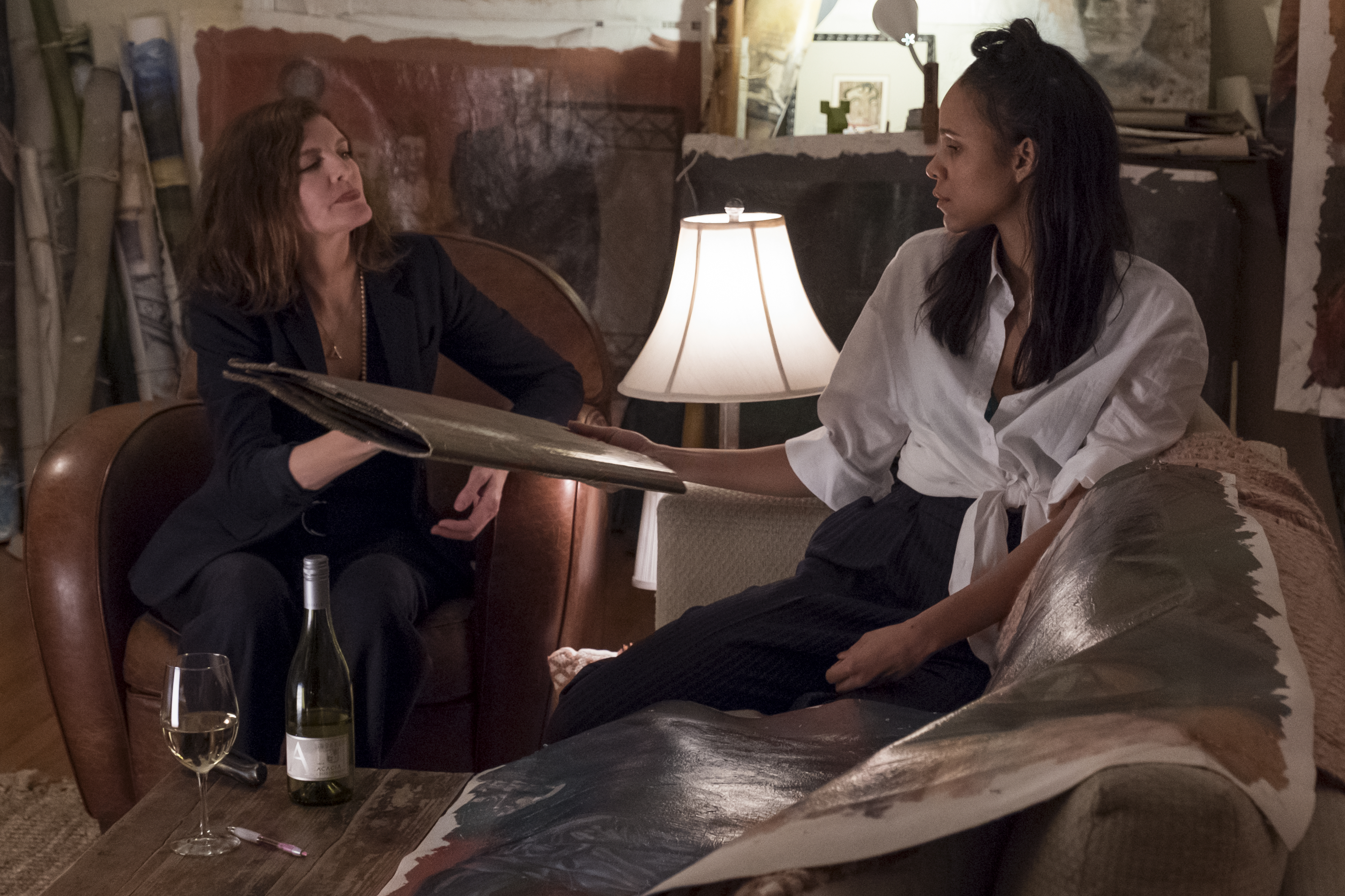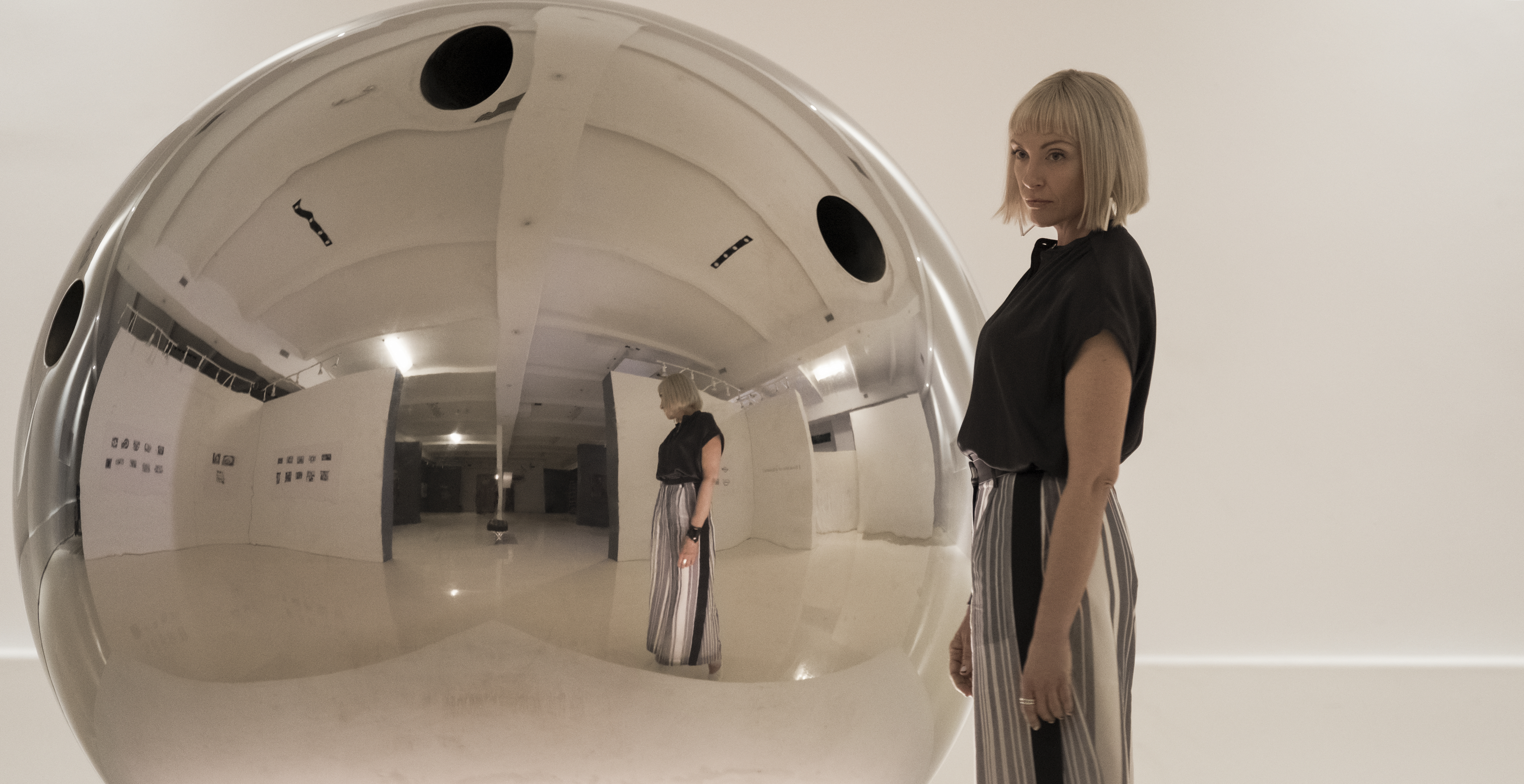Who doesn’t love dark and cynical movies about Los Angeles? If such a person exists, I hope I never meet them. Screenwriter-turned-filmmaker Dan Gilroy has proven to be an idiosyncratic master of this subgenre; one day, maybe they’ll let him direct the gritty Sunset Boulevard remake of the 2020s. Velvet Buzzsaw, a postmodern horror-comedy set in the art world, which premieres on Netflix today, is Gilroy’s third bleak L.A. film. Like Nightcrawler, his seamy and gripping directorial debut, and Roman J. Israel, Esq., its somewhat formless follow-up, Velvet Buzzsaw is a movie about obsession spiraling out of control. Unlike the other two films, its color palette is vibrant, and its dominant tone is campy heightened realism. Gilroy’s unapologetic devotion to this singular mode in Velvet Buzzsaw makes it his most daring and bizarre film yet, and a contender for the most inspired original feature Netflix has yet produced.
Velvet Buzzsaw’s depiction of the rarefied sectors of L.A. where most of the action takes place is both rigorous and farcical. Gilroy introduces nearly his entire cast in the first 15 minutes of the movie, with an unassuming deftness befitting an experienced screenwriter, and a sense of humor recalling Robert Altman. Gilroy has compared his film to The Player, and Buzzsaw’s overstuffed first scene feels like an explicit call-out to Altman’s whimsical 1988 noir. We watch Jake Gyllenhaal’s self-important critic Mort Vanderwalt survey every piece in a gallery full of artists and socialites, breezily establishing his relationship with every major player in the movie.
It seems at first that Vanderwalt, who believes he “furthers the realm” of art as a whole with his blogged analyses, will be at the center of Velvet Buzzsaw’s action, but he doesn’t remain there for long. By a stroke of perverse luck, his gallerist love interest Josephine (Zawe Ashton) comes across a trove of uncannily powerful art in the apartment of a recently deceased artist named Ventril Dease, who lived in near-total obscurity. Josephine’s boss Rhodora (Rene Russo) pushes her to plunder Dease’s apartment full of grubby scrolls for everything it’s worth, disregarding the artist’s request that all of his work be destroyed when he died. The discovery of Dease’s collection sets in motion a vicious cycle of greed, deception, and violence. The paintings seem to infect and transform everything around them: not only Velvet Buzzsaw’s entire cast of characters, but the style of the film itself. Without spoiling too much, the upshot is something like an art-world version of a Nightmare on Elm Street flick.
 On the surface, the conceit of Velvet Buzzsaw is almost painfully simple. Art always transcends those who seek to exploit it. In this case, the paintings literally rebel against their captors, in defense of “some vital ideal,” as Mort puts it. Gilroy lets his avaricious characters indict themselves over and over again. Each time an insider rhapsodizes about a piece of art, a discussion of its “marketability” is sure to follow. Discussions of the “sublime” or “visionary” become debates about profit margins within a sentence. The art itself often reflects the class disparity of Gilroy’s hyperbolized Los Angeles: scenes of poverty and violence, a robotic rendering of a homeless man, a depiction of a lower-middle-class family watching lottery numbers come in on a threadbare couch. Velvet Buzzsaw leaves little of its thematic substance to the imagination, which may repel some viewers.
On the surface, the conceit of Velvet Buzzsaw is almost painfully simple. Art always transcends those who seek to exploit it. In this case, the paintings literally rebel against their captors, in defense of “some vital ideal,” as Mort puts it. Gilroy lets his avaricious characters indict themselves over and over again. Each time an insider rhapsodizes about a piece of art, a discussion of its “marketability” is sure to follow. Discussions of the “sublime” or “visionary” become debates about profit margins within a sentence. The art itself often reflects the class disparity of Gilroy’s hyperbolized Los Angeles: scenes of poverty and violence, a robotic rendering of a homeless man, a depiction of a lower-middle-class family watching lottery numbers come in on a threadbare couch. Velvet Buzzsaw leaves little of its thematic substance to the imagination, which may repel some viewers.
But the bludgeoning begins to feel soothing after a while, and the movie’s primary appeal reveals itself in its defiantly bizarre details. The side players, which include Toni Collette, Daveed Diggs, and John Malkovich, are as effective as the multifaceted main trio of characters. Billy Magnussen is typically hilarious as an art assembler who wants everyone to know he’s an artist as well. Natalia Dyer of Stranger Things finds a perfect role as Coco, a perennial personal assistant, functioning as both a harbinger of doom in the plot and a symbol of foiled millennial aspiration. Even the least essential of this group is fun to watch: Malkovich as a washed-up superstar painter, retreading some of the same ground he marked in Art School Confidential, Terry Zwigoff’s 2006 satire of the art-industrial complex.
 Gilroy’s sets give the viewer an acute sense of what it’s like in these gilded spaces, evoking their sterility, their pretension, and their uncanniness. Every location in the movie is an art gallery, even when the action is happening somewhere else, because the characters treat everything around them as objects to be critiqued aesthetically: cars, body parts, caskets. The camera plays meticulously across the countless artworks in the film, conveying either their absurdity or the sense of wonder they instill in their viewers. Gilroy manages to do the latter even when the supposedly powerful art actually looks pretty silly. (Some of Dease’s pieces can’t help but make me think of the portrait of Vigo the Carpathian in Ghostbusters 2.) The film’s disparate interiors help crystallize Gilroy’s mythic vision of the plunderous commercial art industry—where “nothing new” ever gets made, because the free thinkers and revolutionaries have all been replaced with “purveyor[s] of good taste.”
Gilroy’s sets give the viewer an acute sense of what it’s like in these gilded spaces, evoking their sterility, their pretension, and their uncanniness. Every location in the movie is an art gallery, even when the action is happening somewhere else, because the characters treat everything around them as objects to be critiqued aesthetically: cars, body parts, caskets. The camera plays meticulously across the countless artworks in the film, conveying either their absurdity or the sense of wonder they instill in their viewers. Gilroy manages to do the latter even when the supposedly powerful art actually looks pretty silly. (Some of Dease’s pieces can’t help but make me think of the portrait of Vigo the Carpathian in Ghostbusters 2.) The film’s disparate interiors help crystallize Gilroy’s mythic vision of the plunderous commercial art industry—where “nothing new” ever gets made, because the free thinkers and revolutionaries have all been replaced with “purveyor[s] of good taste.”
Despite its preachier moments, there’s much to savor in Velvet Buzzsaw beyond lit-crit-101 pontificating. Gilroy should be lauded for his refusal to pull punches, committing fully to his kitschy, amalgamated world, one which is only a little bit sillier than our own. He consistently mocks his characters, but draws them lovingly nonetheless, making them more than mere caricatures. Watching the their downward spirals is oddly bittersweet, rather than a comedic payoff. The film is clever enough to keep up with its own crack cast, filled with visual and textual Easter eggs, giving viewers more than enough cryptic filaments to ponder outside of the main themes. This is deeply unconventional material for a horror movie, and it exalts Velvet Buzzsaw above the average possession stories, self-serious slasher flicks, and psychosexual creepfests that Netflix normally serves up Fridays. A few weeks in, and we have what might stand as the weirdest major streaming release of 2019.




